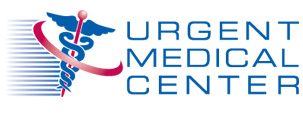 The basic cold and flu are not the only illnesses children are prone to develop. There are a whole host of common illnesses kids often develop, some of which many parents have never even heard of. Being able to identify your child’s symptoms and potential illness is so important in order to react correctly. Allow us to explain 6 common childhood illnesses all parents should know about.
The basic cold and flu are not the only illnesses children are prone to develop. There are a whole host of common illnesses kids often develop, some of which many parents have never even heard of. Being able to identify your child’s symptoms and potential illness is so important in order to react correctly. Allow us to explain 6 common childhood illnesses all parents should know about.
1. Fifth Disease
Often referred to as the “slapped cheek” disease, fifth disease causes a red rash to spread across the torso and limbs. Children do not always feel that sick with this illness, but they may develop symptoms of a cold prior to the rash developing. The name comes from a French physician who assigned numbers to the most common childhood illnesses causing a rash, for instance measles was classified as “first disease.”
20% of children get fifth disease before the age of 5, and 60% of children are infected before 19. The illness and rash generally lasts 7-10 days and is not considered serious.
3. Ear Infections
At any age you can develop an ear infection, but children between 6-months and 5-years old are the most likely to get one. Ear infections are especially common after a child develops a cold. If the middle ear is infected it is usually a viral infection. Symptoms can include fever, reduced hearing, and an earache. In some cases the eardrum may leak fluids as it relieves pressure.
Visit your local Urgent Care Center right away if your child has a high temperature, a lot of pain, or fluids leaking from the ear. It generally takes about one month for an ear infection to fully heal, and in some cases an antibiotic may be necessary.
3. Tonsillitis
Tonsillitis can be caused by a viral or bacterial infection of the tonsils; in most cases the infection is viral. Symptoms include a sore throat, red and swollen tonsils, fever, coughing, headache, and swollen neck glands. Visible pockets of puss may also form on the tonsils. Children between 5 and 15 are most likely to contract tonsillitis. The illness is easily spread through sneezing, coughing, or even just shaking hands with an infected person.
To treat tonsillitis you will want to visit your local Urgent Care Center to determine if the infection is bacterial or viral. If it is bacterial, your child will need an antibiotic to fight it off. Throat lozenges, ibuprofen, and throat sprays can all be used to help reduce discomfort. For reoccurring tonsillitis, a doctor may suggest having the tonsils removed.
4. Impetigo
This bacterial infection is the third most common condition affecting the skin. It is most often identified in children between 2 and 6-years old. Impetigo is highly contagious, to both children and adults. The infection is characterized by itchy bumps filled with fluids. A yellowish crust reminiscent to the color of honey typically forms over the sores.
Contact with the fluids inside the sores can spread the infection to other people, as well as other locations on the same body.
Treatment for impetigo requires prescription antibiotics, and the sores should all heal without leaving behind any lasting scars or damage.
5. Chicken Pox
This highly contagious infection is becoming less common now thanks to the new vaccination available, although chickenpox has impacted most children for many years. Chicken pox includes a red body rash with liquid-filled blisters and is usually accompanied with a fever, headache and general ill feeling.
Children under 10-years old are the most likely to get Chicken Pox. All that it takes is inhaling a small invisible drop of the virus present in the air in order to catch it. Direct contact with blister fluids can also spread the infection.
6. Whooping Cough (Pertussis)
Since the 1980s cases of whopping cough have been on the rise. Whooping cough comes with a sever cough that can actually leave a child breathless so that their cough literally creates a “whoop” sound. According to statistics collected by the CDC, half of all babies infected with whooping cough require hospitalization.
There is a vaccination for whooping cough that all children should get; the vaccine wears off within 5 to 10 years. With every new pregnancy, a woman should undergo a booster shot for whooping cough. Adults are not as likely to experience as severe of symptoms, but they can still spread whooping cough to children.
A Healthy Child Is A Happy Child
Your child’s immune system is growing and developing, but it’s not yet at its peak performance. As your child’s body is introduced to new and different illnesses their overall immunity will grow. In the mean time it’s important for parents to be prepared and treat each illness correctly in order to help your child regain their health as quickly as possible.
At the first sign of illness, bring your child to your local Urgent Medical Center for family-friendly services and compassionate care.




